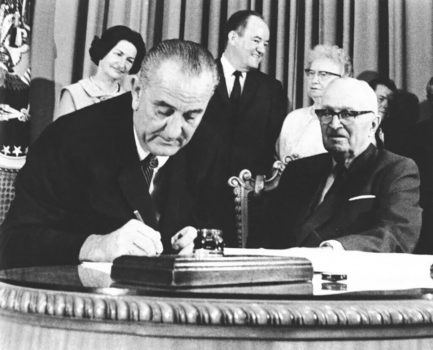(Shirleen Guerra, The Center Square) The Congressional Budget Office has released an analysis of the Biden administration’s newly announced Medicare prescription drug premiums, estimating the new program could cost taxpayers more than $21 billion over three years if implemented.
The analysis comes after House Ways and Means Committee Chairman Jason Smith, R-Mo., House Budget Committee Chairman Jodey Arrington, R-Texas, and Senate Budget Committee Ranking Member Chuck Grassley, R-Iowa, sent a letter to Director Phillip Swagel of the CBO questioning the budgetary impact of this new demonstration program.
A release from Swagel’s department said the increase in federal spending would range from $10 billion to $20 billion in 2025 compared to earlier projections.
“As predicted, the Biden-Harris Inflation Reduction Act not only quelled investment for new cures, but caused Medicare prescription drug plan premiums to skyrocket, and Democrats are scrambling to cover it up before the election,” Arrington said in a press release. “In July, the Biden-Harris CMS scrambled to create a new federal program that will send billions of tax dollars to large health insurance companies to cover up a massive flaw in their so-called Inflation Reduction Act.”
The new average plan bid for a standard Part D coverage increases by 179% for 2025 partly due to an underestimation of federal attributions to the Part D changes, according to the analysis.
Arrington continued, “Today, CBO confirmed that the administration’s election year Hail Mary will cost taxpayers an astounding $7 billion next year alone, and $21 billion over the planned three-year demo, adding to the more than $2 trillion in Biden-Harris executive spending.”
These plans typically expect monthly reinsurance, which means Medicare payments cover part of the costs of prescription drugs when the catastrophic threshold is reached.
Almost 60% of Part D enrollees are through Medicare Advantage plans and receive coverage through MA-PD plans. The rest are covered through what’s known as stand-alone prescription drug plans.
CBO expects the following changes for prescription drug plans in 2025:
• A $15 reduction for monthly PDPs. This would cost a total of $2.9 billion in federal funding.
• Increases in PDPs will be capped at $35 in 2024 and 2025, totaling $1.8 billion in federal funding.
• Risk corridor subsidies will increase for PDPs that have more than 2.5% of bids in 2025, resulting in $250 million of federal funding.
The budget office said the changes to temporary subsidies, combined with risk corridors, will increase federal spending by $5 billion in 2025, with $2 billion in net spending interest until 2034.
Policies included in the $891 billion Inflation Reduction Act of 2022 have changed the Medicare Part D prescription drug benefit that was originally estimated to be $30 million over 10 years beginning in 2025.
This resulted in the sponsors of the Medicare prescription drug plan increasing plan bids and base beneficiary premiums for 2025 while reducing the number of plans that would be available to seniors in 2025.
“When Democrats unilaterally enacted major changes to Medicare two years ago, they set seniors up for new expenses and fewer options,” Grassley said in a release. “This nonpartisan CBO analysis confirms CMS’s cost-shifting plan is a dishonest election year gimmick to cover up those consequences.”
CMS is an acronym for the Centers for Medicare & Medicaid Services.
The program would send federal money to large health insurance companies while falsely lowering the cost for seniors Part D premiums and potentially costing $7 billion in 2025, according to the analysis.
Grassley continued, “Rather than coming to the table and legitimately addressing its partisan mistakes, the Biden-Harris administration threw taxpayer dollars at the problems it created, putting Americans on the hook for tens of billions more dollars.”
The Centers for Medicare & Medicaid Services Administrator Chiquita Brooks-LaSure said in a release, “Today’s final guidance for the Medicare Drug Price Negotiation Program builds off the success of the first 10 negotiated drug prices and continues the Biden-Harris administration’s commitment to provide millions of people with Medicare affordable access to innovative therapies.”
This is a contradiction from the reported number taxpayers will pay that was stated in the analysis.
Brooks-LaSure continued, “While saving Medicare and taxpayers billions of dollars, the negotiated prices will also provide people with Medicare a better deal on some of Medicare’s costliest prescription drugs, promoting necessary competition in the market, and ensuring Medicare is strong today and into the future.”
The temporary subsidies, announced in July, affect both those enrolled and the federal payments to Plan D premiums in 2025, 2026 and 2027, though certain policies have yet to be announced for 2026-27, meaning no budgetary estimation for both years.
The budget office said it expects $100 million in 2025 from each organization that controls and collects payments from the government on behalf of Part D plans.
Continuing that most of that would have been paid for by enrollees in the Part D program through premiums, “For that reason, the effect of CMS’s subsidies on plans’ revenues is much smaller than the federal cost. By providing larger federal subsidies to prescription drug plans, the federal payments to Part D plans effectively cover costs that would have been borne by Part D enrollees.”

